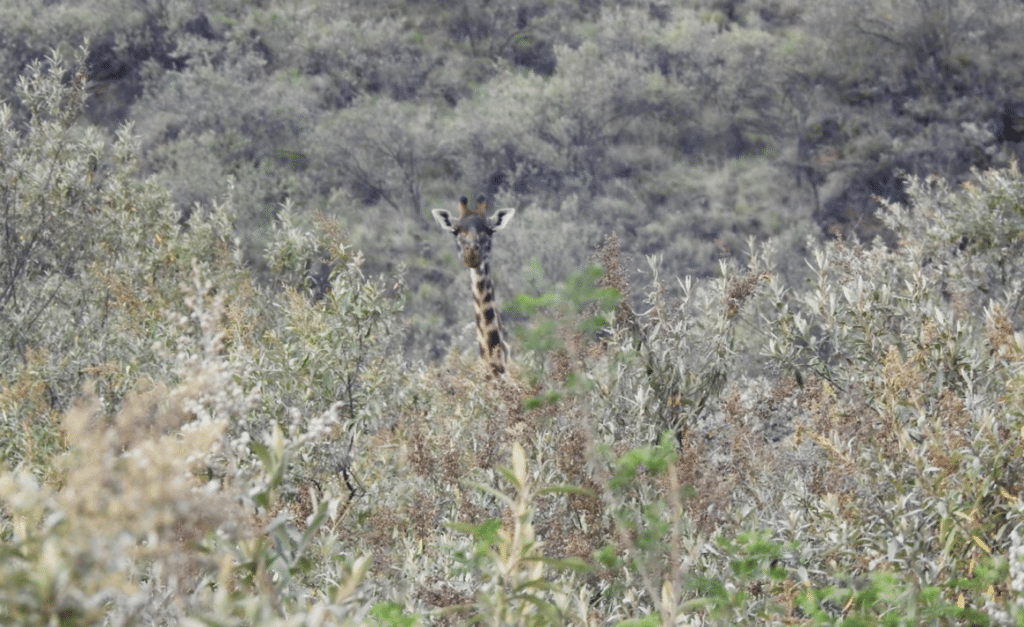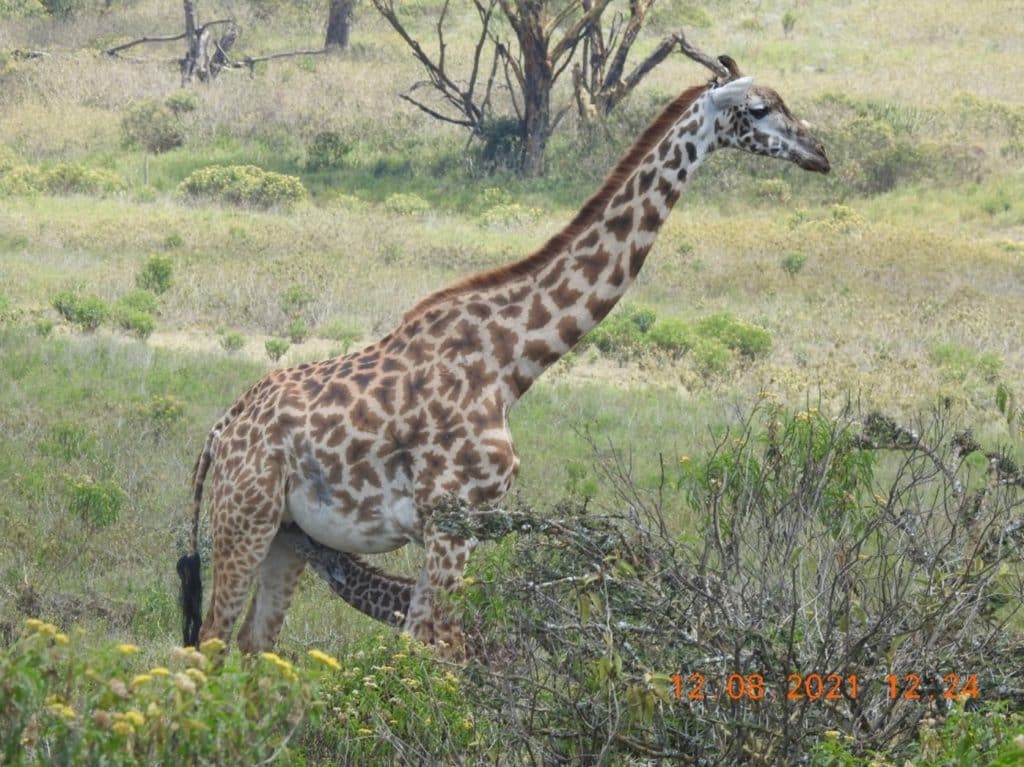Growing up, I always wanted to be a wildlife researcher but never considered just studying one species until I joined the Giraffe Conservation Foundation (GCF).
During my second week on the job, I was briefed about a giraffe survey that was to start in Naivasha, a popular tourist town in central Kenya with scenic landscapes made up of Lake Naivasha and Lake Oloiden, surrounded by hills and wildlife sanctuaries. In fact, the beautiful gorges and pride rocks of Hell’s Gate National Park served as real-life inspiration of Disney’s iconic Lion King movie. Before working for GCF, I had been involved as a volunteer in the National Wildlife Aerial Census organized by the Kenya Wildlife Service (KWS) and Wildlife Research and Training Institute (WRTI). This first-ever countrywide wildlife survey was based on wildlife counts from the air, so my experience in Naivasha was to be very different as it involved close observations of giraffes and recording of individual parameters such as sex, age, snare injuries, lesions, GPS location, and signs of giraffe skin disease.
The giraffe population in Naivasha had not been studied for a long time, making this survey important for updating the overall giraffe numbers in Kenya. Did you know that no two giraffes look the same and that every giraffe has a different coat pattern? These can be used to identify each giraffe individually – just like our fingerprints. So, in this survey, it was my task to take right-side photos of each giraffe we encountered. Coat patterns on both sides of a giraffe are different, so if we can only take photos of one side, we focus on the right side. These photos are then run through a pattern recognition software (Wild-ID) to obtain matches and create a database of encounter histories of individual giraffe, so we know if we have seen each individual giraffe before. This is important because many of the sanctuaries and parks in and around Naivasha are interconnected, unlike in many other urban areas where people typically fence off their land.

A young giraffe hiding in the bushes as we attempted to take photos.
On the first survey day we met up with the KWS research team at Hell’s Gate National Park. It was a cold misty morning with occasional showers, so we were happy to stop for a cup of tea and to meet the rest of the survey team. However, it was not long before the weather cleared, and we started our survey. We soon spotted a herd of 11 giraffes from a distance, and I started taking photos as we got closer. How difficult can it be to take right-hand photos of 11 giraffes? Much more difficult than expected, I realised! As they moved around, it turned out to be rather tricky to keep track of individual giraffes, take a photo and record additional data simultaneously. After a while, they all looked the same to me! However, I finally succeeded and happily got perfect right-side photos of the entire herd.
During the survey, we spotted several small herds and individual giraffes feeding or walking through the landscape. Only later in the day, a group of three giraffe bulls eluded us as they hid between thick Acacia trees with only their heads poking out. We briefly considered following the elusive trio on foot but decided against it because the area was thicketed and the possibility of encountering dangerous wildlife such as a lone buffalo was high.
Since starting to work for GCF, I have learned a lot about giraffes. I am fascinated by the necking behaviour among males and the protective nature of female giraffes. I recently encountered a female that had just given birth and the calf was struggling to suckle. The mother stood motionless, while still recovering from giving birth, so I kept my distance. However, it was a very emotional moment for me because I had never witnessed a birth of any wild animal before. I am proud to report that I still got decent right-side pictures from a distance, recorded data and captured a video of the calf’s first steps in our world!

Giraffe mum and her new-born calf in Hell’s Gate National Park.
The tricky part of these surveys is clicking suitable pictures, especially of moving giraffes. Luckily, we had a very skilled driver who took the time to manoeuvre our vehicle into a good position to take photos even from a distance without disturbing the animals.
So far, our giraffe surveys have been very successful, and we have received good cooperation from the private farm owners. These surveys have spiked my interest and curiosity to learn more about giraffes. There is so much more to learn about these gentle giants! And, along the way, I have become quite experienced in changing tyres and getting vehicles out of warthog holes too!

A day to remember in the field when our vehicle got stuck in a deep hole in one of the sanctuaries during the survey.


